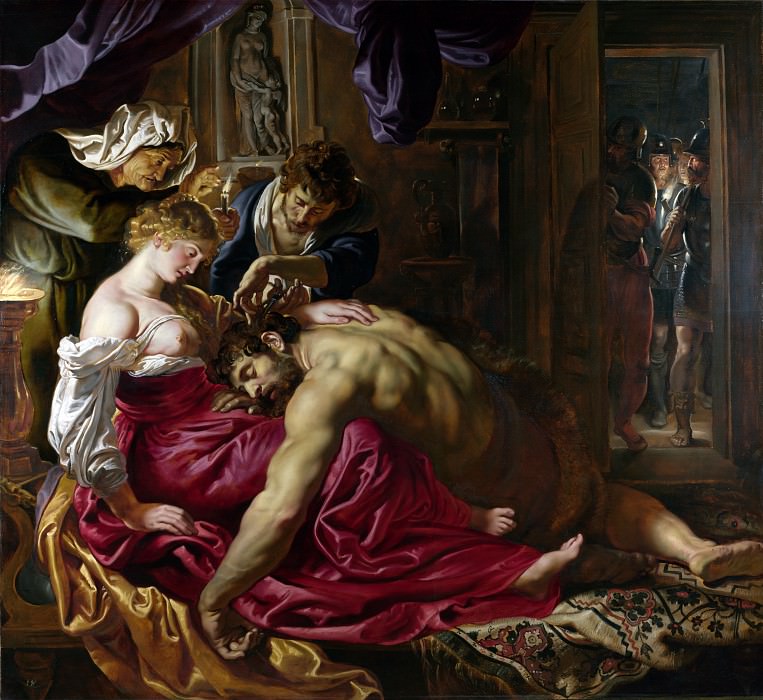Samson and Delilah Peter Paul Rubens (1577-1640)
Peter Paul Rubens – Samson and Delilah
Edit attribution
Image taken from other album: gallerix.org/s/1152601724/N/1903690165/
Download full size: 4602×4226 px (5,5 Mb)
Painter: Peter Paul Rubens
Influenced by the works of Italian artists, Rubens created works on religious themes. The painting "Samson and Dalila," painted around 1609, depicts one of the biblical episodes. The author finds the characters as historical subjects without putting any religious meaning into them. Samson, born and raised among the submissive insults, humiliations, and disgraces of his people, avenges the enemy by committing mass bloodshed to the Philistines.
Description of Peter Rubens’ painting Samson and Delilah
Influenced by the works of Italian artists, Rubens created works on religious themes. The painting "Samson and Dalila," painted around 1609, depicts one of the biblical episodes. The author finds the characters as historical subjects without putting any religious meaning into them.
Samson, born and raised among the submissive insults, humiliations, and disgraces of his people, avenges the enemy by committing mass bloodshed to the Philistines. Having made a vow and devoted himself to the Most High, he grew long locks of hair, which gave him strength. However, the Old Testament hero became a victim of a passionate love for the cunning Dalila, who made a promise to the Philistine authorities for some reward to find out what Samson’s unimaginable omnipotence was.
Four brightly lit ovals of faces can be seen in the foreground. Samson falls asleep in the lap of Dalila, who watches as a Philistine standing nearby cuts off his curls, the primary source of power. Another character involved in the story is an old woman who is absent from the Bible story: the author refers to the fact that the events take place in a brothel.
The artist shows human passion and impending bloody incidents through the predominant burgundy color in Dalilah’s garb. And the army of soldiers standing in the doorway with various blinding implements symbolizes that something terrible awaits Samson in the near future. In the background is a large statue of a Roman goddess, partly repeating the pose, the tilt of Dalila’s head. It is important to note that the bare breasts symbolize passion, lust, which the author has depicted so vividly.
The background of the painting is quite bleak, done in dark shades. The light only falls on the faces of the characters, as if highlighting and emphasizing them. The color scheme conveys the mood, setting, and character of the painting.
Кому понравилось
Пожалуйста, подождите
На эту операцию может потребоваться несколько секунд.
Информация появится в новом окне,
если открытие новых окон не запрещено в настройках вашего браузера.
You need to login
Для работы с коллекциями – пожалуйста, войдите в аккаунт (open in new window).










![Peter Paul Rubens - Saint Peter [Workshop]](http://cdn.gallerix.asia/j/_EX/754398988/422311401.webp)









You cannot comment Why?
The subtexts of the painting are rich and multifaceted. It is a powerful representation of betrayal and the vulnerability of strength when compromised by deception and lust. Delilahs act symbolizes the seduction that leads to Samsons downfall, highlighting the theme of how beauty and desire can be used as tools for destruction. The soldiers waiting in the background underscore the immediate consequences of Samsons weakened state, representing the triumph of his enemies. The painting also explores themes of divine punishment, as Samsons loss of strength is a direct result of his broken vow. The dramatic lighting and emotional intensity contribute to the overall feeling of impending doom and the tragic nature of Samsons fate.